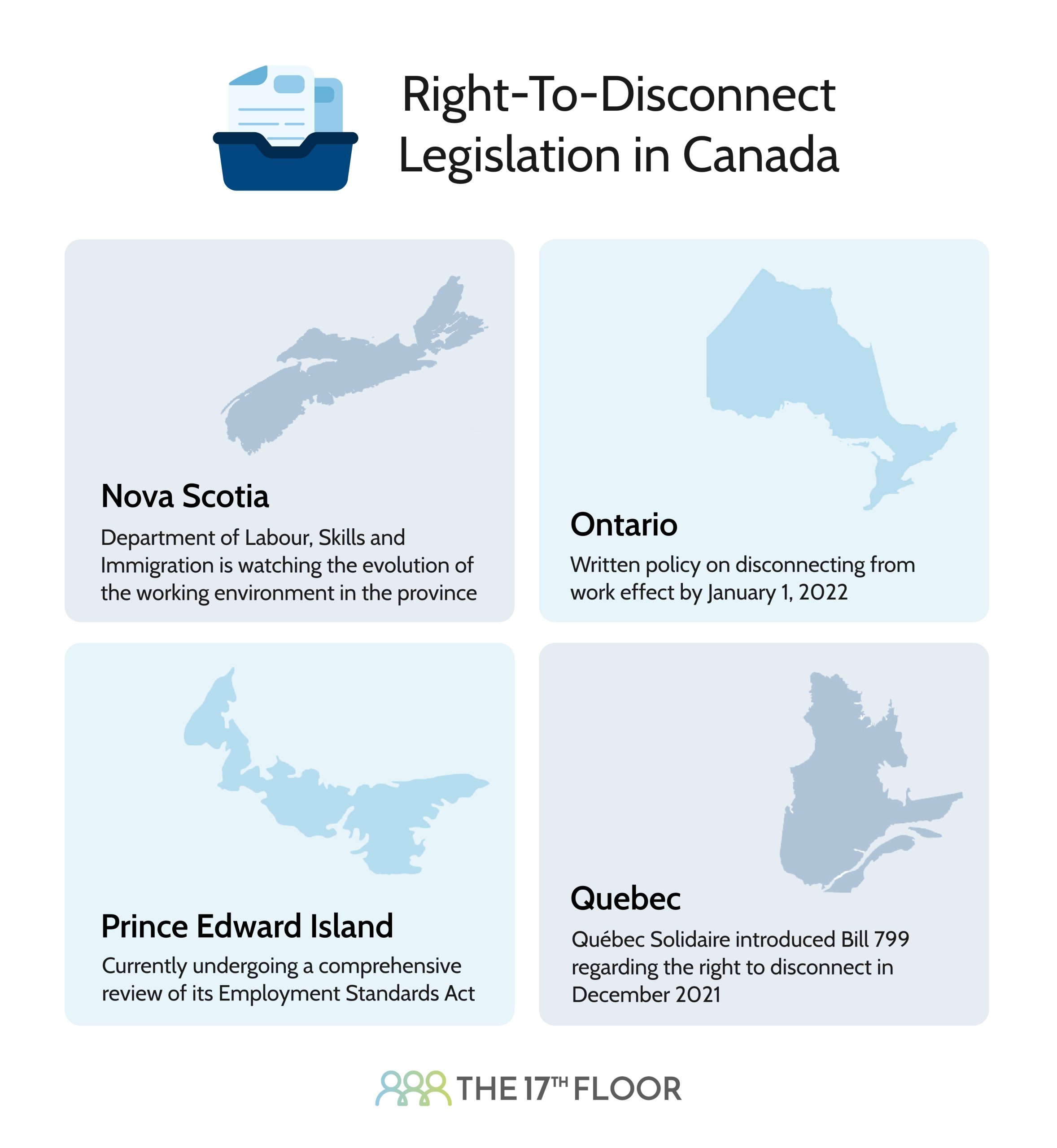3 Canadian Provinces Working on Introducing Right-To-Disconnect Legislation to Join Ontario

“Smartphones and e-communications are a reality of the 21st-century workplace. Workers are increasingly subject to expectations to be constantly available. With this in mind, the Government committed to co-develop a “right to disconnect” for federally regulated workers,” starts the report published by the Government of Canada last February.
Regarding, the private sector, “the Government should not adopt a legislative or regulatory requirement related to the right to disconnect but encourage parties to develop policies to ensure proper work-life balance for employees” details the report.
“While issues around disconnect predate the pandemic, COVID-19 has added new dimensions to this issue. According to Statistics Canada (StatCan), up to 40% of Canadians have worked from home due to pandemic restrictions. This is in contrast to only about 8% of workers working any of their scheduled hours from home in 2018. Workers said that they are largely pleased with their new teleworking arrangements. However, “switching off” at the end of the day has been the most reported concern,” continues the report.
Slowly but surely, Canadian provinces are joining Ontario’s recent right-to-disconnect legislation. This new regulation requires employers that employ 25 or more employees to have a written policy on disconnecting from work in place for all employees. According to Sadie Janes, three provinces in total are working on adding this legislation as well.

For more information about the Final Report of the Right to Disconnect Advisory Committee issued by the Government of Canada, visit this link.
You can also read what 7 members of The 17th Floor had to say on the right-to-disconnect legislation. Check out their thoughts here!
Has your company applied this right-to-disconnect policy? Tell us in the comments section below.
HR Legislation, Human Resources, Infographics, Remote Work, Stress and Anxiety, Work-Life Balance

Denise Haight
We have implemented this policy. Our staff is more mindful when sending messages/requests to each other. Holding off until colleagues are back from PTO etc.
Kiana Sunarth
This policy has been implemented in our organization however they were quite mindful of this prior to the legislation being introduced.
Donna Parker
This is welcome news and is definitely needed, especially for employees who have had to return to the office after being connected for two years during Covid.